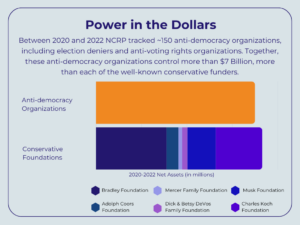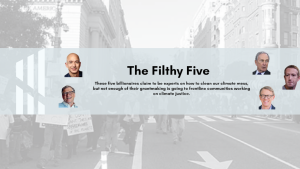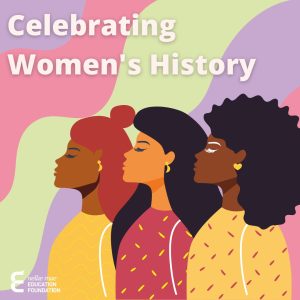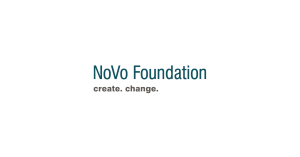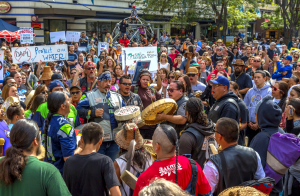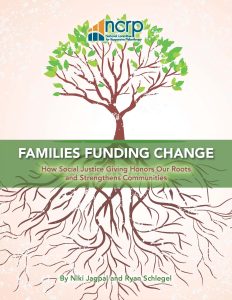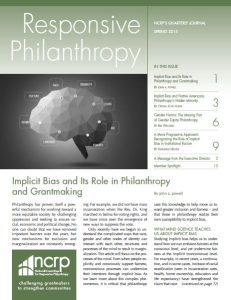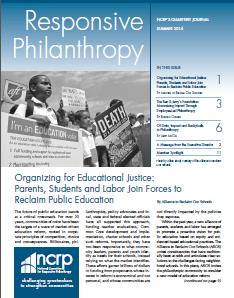The National Committee for Responsive Philanthropy (NCRP), like many organizations, encourages grantmakers to meet with their grantees and the communities they serve, as part of a greater strategy of engaging constituents, receiving feedback and witnessing firsthand the impact of philanthropic work in the “real world.” But, let’s face it: not all site visits are equal, and not all site visits are necessary.
So, let’s consider three questions grantmakers can ask themselves before pursuing a site visit.
(1) How do power dynamics affect the grantee-grantmaker partnership?
- Before a site visit, let’s study the actors (grantees and grantmakers) and the relationship (partnership). “Grantee-grantmaker partnerships” is a popular phrase, but does it reveal a power imbalance? Let’s look deeper. Is “grantmaker” too limiting? After all, isn’t grantmaking just one purpose of a foundation, in addition to convening, mission investing, networking, developing leadership, being a thought leader, researching and other roles?
- Is “grantee” too limiting? For instance, would our perception of “grantees” change if we titled them “doer leaders”? Or, using a cynical lens, what if “grantees” were titled contractors, outsourced laborers, or money-applicants?
- Do grantmakers and grantees even have true “partnerships?” Ideally, grantmakers and grantees would have symbiotic relationships. After all, grantmakers – unless they’re operating foundations – are just as reliant on grantees’ abilities to use their funding, as grantees are reliant on funding. However, our sector has greater demand for funding than demand for finding someone to take funding. With this “money factor” in mind, is “partnership” an accurate label for the current relationship, or is it more of an aspiration?
So, it’s clear that there is a power imbalance between grantmakers and grantees. Moreover, that power imbalance affects site visits. If you’re not convinced, consider this: What would happen if a nonprofit executive director planned a site visit of a foundation office and proceeded to disagree with how the foundation budgeted, strategized, invested its endowment, paid its employees and even decorated?
(2) What are the opportunity costs of site visits?
In Microeconomics 101, we learn about the zero-sum game of “opportunity costs.” When we say “yes” to one thing, we say “no” to something else. Let’s add up costs of a site visit: flights, hotels, rental cars, food – not to mention time away from the office. Also consider the potential benefit of relationship-strengthening, idea-sharing and knowledge-building during site visits.
But, wait! Let’s add one more piece to the puzzle: What is the size of the grant versus the cost of the site visit? Would giving a larger grant instead of conducting a site visit help more? Or, could the site visit lead to the board approving more money? Is a site visit the most useful way a program officer can serve a nonprofit leader, given finite time and resources?
(3) What is a foundation’s purpose for conducting the site visit?
What is a foundation’s purpose in doing a site visit? Is it to meet an annual quota? Is it aiming to learn about grantee operations and keep itself informed? Is it to seek out grantees that can fulfill the foundation’s mission? Or is the purpose to find and help talented nonprofit leaders to achieve collective goals that benefit and empower communities? If this last option is the purpose, site visits may or may not be the best tool. As a nonprofit executives and program officers collaborate, perhaps they will realize time and funds should be spent on executive coaching, a staff retreat or a larger general operating support grant.
In sum, there is no perfect formula for good site visits or necessary site visits. However, we make progress when grantmakers (1) acknowledge and address power dynamics between grantmakers and grantees, (2) weigh opportunity costs of site visits with grantees’ help, and (3) consider what the grantmakers and grantees wish to accomplish with a face-to-face visit, considering the overarching purpose of both foundations and nonprofits.
What do you think about site visits?
Christine Reeves is senior field associate at the National Committee for Responsive Philanthropy (NCRP). Follow @NCRP on Twitter.

